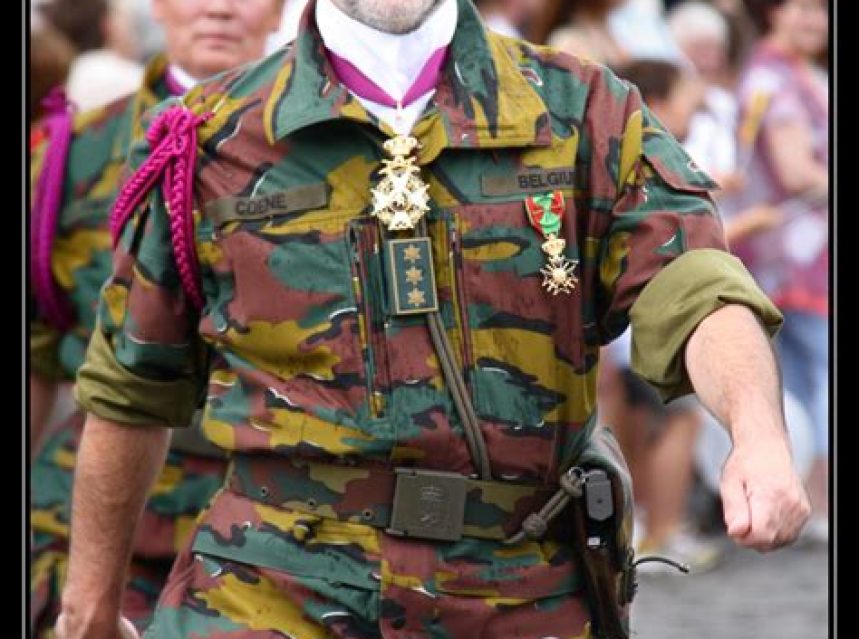Belgium Military Uniform

Belgium’s military uniform holds a rich history that has seen remarkable transformations throughout the years. This blog post will delve into the captivating journey of the country’s military attire, exploring its humble beginnings and how it has evolved into the modern era. From the early days when functionality took precedence to the infusion of style and symbolism, we will explore the key elements and distinctive features that define the Belgium military uniform. Additionally, we will unravel the significance of colors in this attire and discuss the latest trends that reflect the contemporary ethos of the Belgian armed forces. Join us on this insightful exploration of Belgium’s military uniform.
History of Belgium Military Uniform
Belgium, a small but influential country, has a rich history when it comes to military uniforms. The history of Belgium military uniforms is a captivating journey that reflects the nation’s turbulent past and its role in shaping European warfare. From its early beginnings to the modern era, the evolution of Belgium military uniforms is a testament to the country’s resilience and adaptability in the face of changing military landscapes.
The history of Belgium military uniforms dates back to the early 19th century when Belgium gained independence from the Netherlands. At that time, the Belgian Army adopted a uniform that was heavily influenced by the French military. The distinctive features of these early uniforms included the use of bright colors, such as red and blue, and extravagant embellishments like gold braiding and epaulets. These elements not only added a touch of grandeur to the uniforms but also served to distinguish the soldiers from other European armies on the battlefield.
As time went on, the evolution of Belgium military uniforms took a more practical turn. The key elements of Belgium military uniforms began to prioritize functionality and comfort, while still maintaining a sense of tradition and national identity. One notable change was the introduction of khaki-colored uniforms during World War I, which offered better camouflage and protection in the trenches. Additionally, the use of standardized insignia and badges became more prevalent, allowing for easier identification of ranks and units within the army.
The significance of colors in Belgium military uniforms cannot be overstated. Each color holds symbolic meaning and represents different aspects of the country’s history and values. For instance, red represents courage and sacrifice, while black symbolizes determination and resilience. These colors are often displayed prominently on the uniform’s beret, collar tabs, and shoulder patches, allowing soldiers to proudly showcase their allegiance to Belgium and its values.
| Period | Uniform Style | Key Changes |
|---|---|---|
| 19th Century | Bright colors, gold braiding, epaulets | French influence, extravagant design |
| World War I | Khaki-colored uniforms | Better camouflage, protection in trenches |
| Modern Era | Standardized insignia and badges | Easier identification of ranks and units |
In recent years, modern trends have also made an impact on Belgium military uniforms. With advancements in technology and changes in warfare strategies, the focus has shifted towards lighter, more ergonomic designs. The integration of high-performance materials and innovative features, such as built-in body armor and modular attachments, has become essential in ensuring the safety and comfort of soldiers on the battlefield.
In conclusion, the history of Belgium military uniforms is a fascinating narrative that reflects the nation’s identity, adaptability, and commitment to its military heritage. From the elaborate designs of the past to the practical and forward-thinking uniforms of today, Belgium’s military attire has undergone significant transformations. By understanding the history and evolution of Belgium military uniforms, we gain insights into the country’s rich cultural heritage and its enduring dedication to military excellence.
Evolution of Belgium Military Uniform
The evolution of Belgium military uniform reflects the country’s rich history and its journey towards modernization. Over the years, Belgium has seen significant changes in its military uniform, which have been influenced by various factors such as societal norms, technological advancements, and changing military strategies. Understanding the evolution of Belgium military uniform provides valuable insights into the country’s military history and the significance of these uniforms in representing its national identity.
Throughout the years, the Belgium military uniform has undergone several transformations, adapting to the changing needs of the armed forces. Initially, during the late 17th century, the military uniform consisted of distinctive features like tricorn hats, long coats, and knee-breeches. These uniforms were mainly influenced by the fashion trends of the time and were designed to provide protection and identification on the battlefield.
As we move forward to the 19th century, the military uniform underwent notable changes influenced by the advancements in military tactics and technologies. The introduction of rifled muskets and artillery required soldiers to have more practical and functional uniforms. The traditional bright colors and decorative elements gradually gave way to more subdued and practical designs, with a focus on durability and camouflage.
- In the early 20th century, Belgium faced the turmoil of World War I, which significantly impacted the military uniform. The distinctive features of this era’s uniforms included trench coats, puttees, and steel helmets, designed to provide protection in the challenging trench warfare environment.
- World War II brought further changes to the Belgium military uniform, with the adoption of field uniforms and specialized garments for various branches of the armed forces. This period also witnessed the introduction of camouflage patterns and the use of standardized insignias for better identification.
- In recent times, with the advent of modern technology and the evolution of warfare, the Belgium military uniform has adapted to meet the demands of the contemporary battlefield. The emphasis has shifted towards functionality, comfort, and flexibility, with the incorporation of advanced materials, such as moisture-wicking fabrics and body armor.
| Time Period | Main Characteristics |
|---|---|
| Late 17th century | Tricorn hats, long coats, knee-breeches |
| 19th century | Subdued colors, practical designs |
| Early 20th century | Trench coats, puttees, steel helmets |
| World War II | Field uniforms, specialized garments, camouflage patterns |
| Modern times | Functionality, advanced materials |
The evolution of the Belgium military uniform not only represents the changing nature of warfare but also highlights the country’s commitment to adapt and modernize its armed forces. These uniforms serve as a visual symbol of national identity, pride, and unity among its military personnel. As Belgium continues to evolve and face new challenges on both national and international fronts, it is likely that the military uniform will continue to evolve alongside, incorporating new technologies and reflecting the changing needs of the armed forces.
Key Elements of Belgium Military Uniform
Belgium is known for its rich history and strong military tradition. The Belgium military uniform has evolved over the years, but there are key elements that have remained constant. These elements not only represent the country’s military heritage but also contribute to the functionality and practicality of the uniform.
One of the key elements of the Belgium military uniform is the distinctive colors that are used. The primary colors are black, yellow, and red, which are also the colors of the Belgium national flag. These colors symbolize loyalty, courage, and strength, reflecting the values and principles of the Belgian military. The use of these colors in the uniform not only creates a sense of unity and patriotism but also enhances the visibility of soldiers in various combat situations.
Another important element of the Belgium military uniform is the design and structure. The uniform is designed to provide comfort, durability, and protection to the soldiers. The uniform consists of a jacket, trousers, and boots, which are made from high-quality materials to withstand harsh weather conditions and combat situations. The design incorporates functional features such as multiple pockets and Velcro straps for carrying essential equipment and ensuring quick access when needed.
The insignia and rank markings are also significant elements of the Belgium military uniform. These markings indicate the rank and specialization of the soldiers, allowing for clear identification and effective communication within the military hierarchy. The insignia and rank markings are typically displayed on the shoulder or chest of the uniform and are made using embroidered or metal badges. These markings not only serve a practical purpose but also instill a sense of pride and accomplishment among the soldiers.
- Distinctive colors: black, yellow, and red
- Functional design and structure
- Insignia and rank markings for identification
| Colors | Design and Structure | Insignia and Rank Markings |
| The use of black, yellow, and red represents loyalty, courage, and strength. | The uniform is designed for comfort, durability, and protection in combat situations. | Insignia and rank markings allow for identification and effective communication within the military hierarchy. |
| Enhances visibility and creates a sense of unity and patriotism. | Incorporates functional features like multiple pockets and Velcro straps for carrying equipment. | Instills a sense of pride and accomplishment among the soldiers. |
In conclusion, the key elements of the Belgium military uniform are the distinctive colors, functional design and structure, and insignia and rank markings. These elements not only reflect the country’s military heritage but also contribute to the practicality, functionality, and identity of the uniform. The Belgium military uniform serves as a symbol of patriotism, unity, and the values upheld by the Belgian armed forces.
Significance of Colors in Belgium Military Uniform
The significance of colors in the Belgium military uniform is not just a matter of design, but it holds a deep symbolic meaning. Each color represents different elements and characteristics that are essential to the history and values of the Belgian Armed Forces.
In the Belgium military, the primary colors used in the uniform are red, black, and gold. These colors hold great significance and are rooted in the history of Belgium. Let’s take a closer look at what each color represents:
-
Red: The color red represents courage, sacrifice, and valor. It symbolizes the bloodshed by the Belgian soldiers who fought for their country’s freedom and independence. In the military uniform, red is often displayed prominently, such as in berets or badges, to remind soldiers of their duty to protect and defend their nation.
-
Black: Black is a color of power, strength, and unity. It represents discipline, determination, and resilience. Black is commonly seen in the boots, belts, and other accessories of the Belgium military uniform, highlighting the importance of discipline in the armed forces.
-
Gold: Gold symbolizes honor, excellence, and achievement. It represents the highest level of recognition and valor. Gold is often used in the trimmings, buttons, and embellishments of the Belgium military uniform to denote rank, valor, and exceptional service.
The combination of these colors in the Belgium military uniform reflects the country’s history, values, and the commitment of its soldiers to serve and protect. The design and symbolism behind the colors not only foster a sense of pride and unity among members of the armed forces but also serve as a visual reminder of the sacrifices made by previous generations.
| Color | Symbolic Meaning |
|---|---|
| Red | Courage, sacrifice, valor |
| Black | Power, strength, unity, discipline |
| Gold | Honor, excellence, achievement |
In conclusion, the significance of colors in the Belgium military uniform goes beyond aesthetic appeal. Each color holds a deep symbolic meaning, representing the values, history, and commitment of the armed forces. The combination of red, black, and gold serves as a visual reminder to all soldiers of their duty to protect and defend their nation, fostering a sense of pride, unity, and discipline within the Belgian Armed Forces.
Modern Trends in Belgium Military Uniform
In recent years, there have been noticeable modern trends in Belgium military uniforms. These new developments have been implemented to enhance both functionality and aesthetic appeal. The modern trends in Belgium military uniforms focus on incorporating innovative materials and designs, as well as adapting to the evolving requirements of the armed forces.
One of the key elements of the modern trends in Belgium military uniforms is the use of advanced fabrics. With advancements in textile technology, military uniforms now utilize materials that are more lightweight, breathable, and moisture-wicking. These fabrics enhance the comfort and performance of the soldiers, allowing them to maneuver more easily during intense operations.
In addition to functional improvements, the modern trends in Belgium military uniforms also pay attention to the visual aspects. The evolution of military fashion has led to the introduction of sleeker and more streamlined designs. This aesthetic transformation aims to promote a more professional and contemporary appearance for the armed forces.
Frequently Asked Questions
1. Question: What is the history of Belgium military uniforms?
Answer: The history of Belgium military uniforms dates back to the establishment of the Belgian Armed Forces in the 19th century. The uniforms have evolved over time to reflect historical events, changes in military tactics, and the influence of neighboring countries.
2. Question: How has the Belgium military uniform evolved over the years?
Answer: The Belgium military uniform has undergone several transformations over the years to align with modern warfare and changing fashion trends. From traditional designs influenced by European powers to more functional and practical attire, the evolution of the uniform mirrors the changing nature of warfare.
3. Question: What are the key elements of the Belgium military uniform?
Answer: The key elements of the Belgium military uniform include the standard-issue camouflage patterns, rank insignia, national emblems, and branch-specific accessories like headgear and boots. These elements serve both functional and symbolic purposes, representing the identity, hierarchy, and professionalism of the Belgian soldiers.
4. Question: What is the significance of colors in the Belgium military uniform?
Answer: Colors play a significant role in the Belgium military uniform. The dominant colors, such as green and brown, are chosen to provide effective camouflage in various terrains. The use of national colors, such as black, yellow, and red, also reflects Belgian national pride and identity within the military context.
5. Question: What are some modern trends in the Belgium military uniform?
Answer: Modern trends in the Belgium military uniform focus on enhancing functionality, comfort, and adaptability. This includes the incorporation of innovative materials and designs that improve mobility, durability, and protection. The introduction of specialized gear for different branches, such as special forces, also reflects the evolving needs of the modern military.
6. Question: Are there any specific historical influences on the Belgium military uniform?
Answer: Yes, the Belgium military uniform has been influenced by various historical events and neighboring countries. For example, during the Napoleonic era, the uniform designs reflected the French influence. Additionally, the two World Wars and the Cold War period brought further changes and adaptations to the uniform to align with international alliances and military strategies.
7. Question: How does the Belgium military uniform reflect national identity?
Answer: The Belgium military uniform reflects national identity through the use of Belgian national colors, emblems, and symbols. It represents the pride, unity, and commitment of the Belgian armed forces in defending the country and its values. The uniform also acts as a visual representation of the nation’s military heritage and its role in international security efforts.


